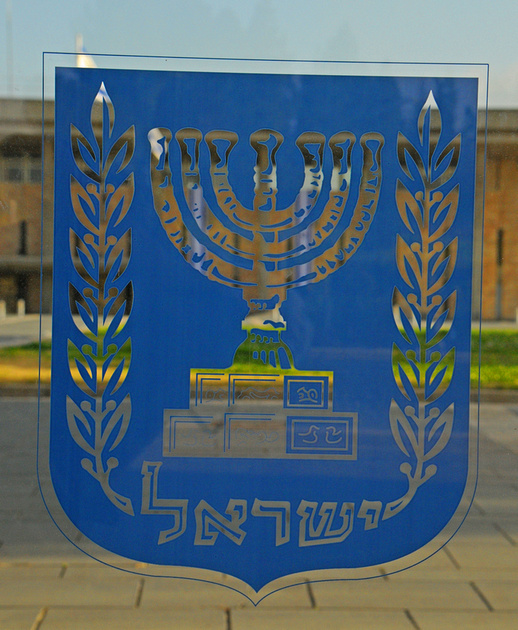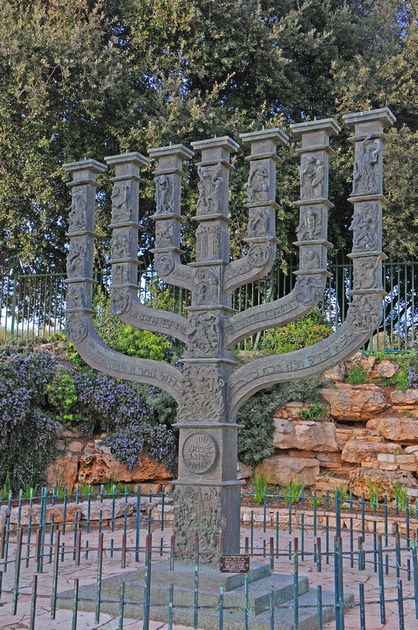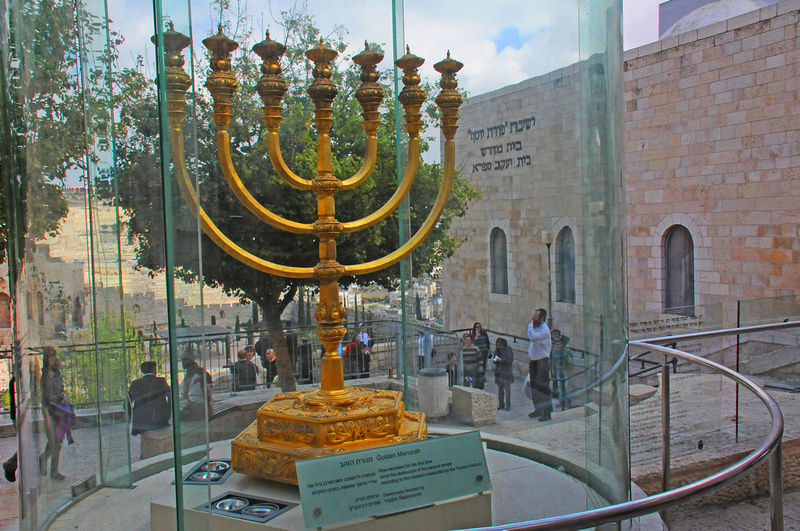New Beginnings
New Beginnings
Even though the Nation of Israel established in 1948 is the reconstitution of an entity that has a 4,000 year history, there is much that is new. What a wonderful union of ancient and modern! Israel has, since the seminal days of God’s call to Abram, always been encouraged to remember God’s relationship with them and His deeds in their history. David notes that God has “made known his ways to Moses, his deeds to the people of Israel”. Jeremiah hears the LORD declaring, “the days are coming when men will no longer say, ‘As surely as the LORD lives, who brought the Israelites up out of Egypt,’ but they will say, ‘As surely as the LORD lives, who brought the Israelites up out of the land of the north and out of all the countries where he had banished them.’ For I will restore them to the land I gave to their forefathers.” (16:14-15); we live in those “days”.
Remember the past, but pay close attention to the present!


In the 1948 re-establishment of the Nation of Israel, the national coat of arms, and symbol selected to represent this “new” Nation is the ancient Menorah, built by Moses’ artists according to God’s instructions, as part of the furnishings in the Tabernacle, the dwelling place for God’s presence on earth. This Menorah, as the symbol of the Nation, is flanked by two olive branches, one on each side.
The Menorah below stands near the Knesset in Jerusalem and is intricately decorated with images telling significant parts of Israel's story. (The Menorah gallery contains images of a few of the details, and other Menorah images.)


When the Prophet Zechariah saw the solid gold Menorah that the LORD showed him, which was flanked by an olive tree on either side, he asks for an explanation. The LORD’s response is that it is a message for Zerubbabel, who is in the process of rebuilding the Temple. God says, “This is the word of the LORD to Zerubbabel: ‘Not by might nor by power, but by my Spirit, says the LORD Almighty.’” This is to assure Zerubbabel that his “hands have laid the foundation of this temple; his hands will also complete it. Then you will know that the LORD Almighty has sent me to you.” To further clarify for Zechariah the overarching significance of what he is seeing, the heavenly messenger speaking with him tells him that the seven lights of the Menorah are “the eyes of the LORD, which range throughout the earth” and the two olive trees on either side are the two anointed ones, the Priest and the King, “who are anointed to serve the lord of all the earth” (Zechariah 4). Since the symbol chosen to represent Israel is flanked by two olive branches, it would seem reasonable to suggest that this Zechariah image is referenced by the design.
(The image below shows the GOLD Menorah, created by goldsmith Chaim Oden for the Temple Institute; 45-60 kilos of gold, hammered from one block of 24kt gold, were used to create this Menorah according to the specifications in the Torah, and designed for the future Temple. It stands above the Kotel/Western Wall plaza.)


The founders of modern Israel, although some of them were quite secular, are still people of the book and understand the significance of their decision to use this symbol to represent the essence of the newly re-constituted Israel.
I recently saw a wonderfully intricate shivviti, a painting/plaque for synagogue or home, created by a late 19th century resident of Hebron, Shneur Zalman Mendelowitz, as a gift for someone named Solomon; his last name is unfortunately obliterated by a tear in the fabric of the piece, but the inscription at the bottom is intact and provides another dimension to the meaning of this national symbol. At the center of this complex painting, is a large Menorah with two smaller ones on either side. At the bottom, and referring to the Menorah, is an inscription which reads, “It is the tree of life to those who hold it, and all who uphold it are rendered happy”.
I love the connection of the Menorah to the Tree of Life.
In the Nun section of the alphabetic acrostic Psalm 119, the Psalmist says, “Your word is a lamp to my feet and a light for my path”. The Menorah/lamp has always represented God’s LIGHT for His people, and, through them, God’s LIGHT for all the earth. In this passage, the Psalmist identifies the light with God’s WORD.
So, given all of this, we can say that Israel’s National Symbol, the Menorah, connects this “new” nation to its ancient roots in the Torah, the Psalms, the books of History and the Prophets, and thus re-establishes Israel in its role as a Light to the nations of the world.
Moses hears and follows God’s instructions to decorate the menorah’s branches with almond blossoms. The Hebrew word for these decorative “almond blossoms” is sha’ked which shares the same root as another Hebrew word, sha’kad, which means “to watch, to wake, and to be diligent”. Martin and Norma Sarvis, in the January 27, 2014 issue of their weekly Prayer Update From Israel, say this about the almond blossoms decorating the Menorah: “This is the word used in Psalm 127: 1, ‘Unless the LORD guards the city, the watchman stays awake in vain.’ Since the almond is the first tree to blossom in Israel, in mid-winter while other trees are still sleeping, it bears this same root and has become a symbol for wakefulness, and alertness. This is why both of these words are used in Jeremiah 1: 11-12. The LORD asks Jeremiah what he sees, and he responds, ‘The branch of an almond (sha’ked) tree.’ The LORD responds, ‘You have seen well, for I am watching over (sha’kad) my word to perform it.’ Even so, the menorah, which illumined the darkness when all else were sleeping was decorated with these flowers-among other things, a symbol of He who watches over Israel neither slumbers nor sleeps-who also watches over His word regarding her to perform it.”
Not only do these almond blossoms symbolize emerging new life, but, in their connection to the Menorah, they also symbolize light. As natural light is necessary for the almond tree to bud and blossom, so the Eternal Light of God, symbolized by the Menorah, is necessary for new life to come for mankind.
Such symbolism certainly did not escape the 1948 founders of the Nation when they chose the ancient Menorah to be the symbol of modern Israel; and it should not be surprising that this claim will elicit hostility from those who are bound and determined to obliterate the Jews from History and re-tell the story as one with no Jews in it. Attempting to destroy archaeological sites and deny archaeological finds is necessary to accomplish this revision. (Sounds like a topic for another blog.)
Let me conclude with a comment on the photograph accompanying this blog. My dear Grace saw and photographed this almond tree in full bloom at the Shiloh archeological site with its thriving new community of hardy returnees to the Mountains of Israel. This visit was thoroughly enhanced by the friendship and help offered by Hillel, our guide, David, who made the arrangements for us and Sondra whose hospitality we enjoyed. Thank you all.


Comments
PS Aren't the almond trees blooming about now?